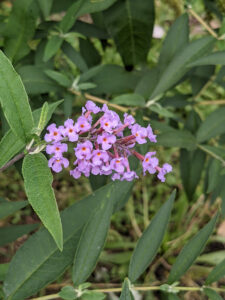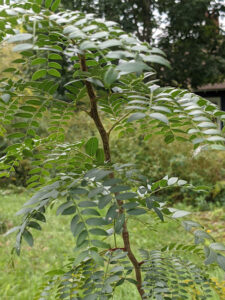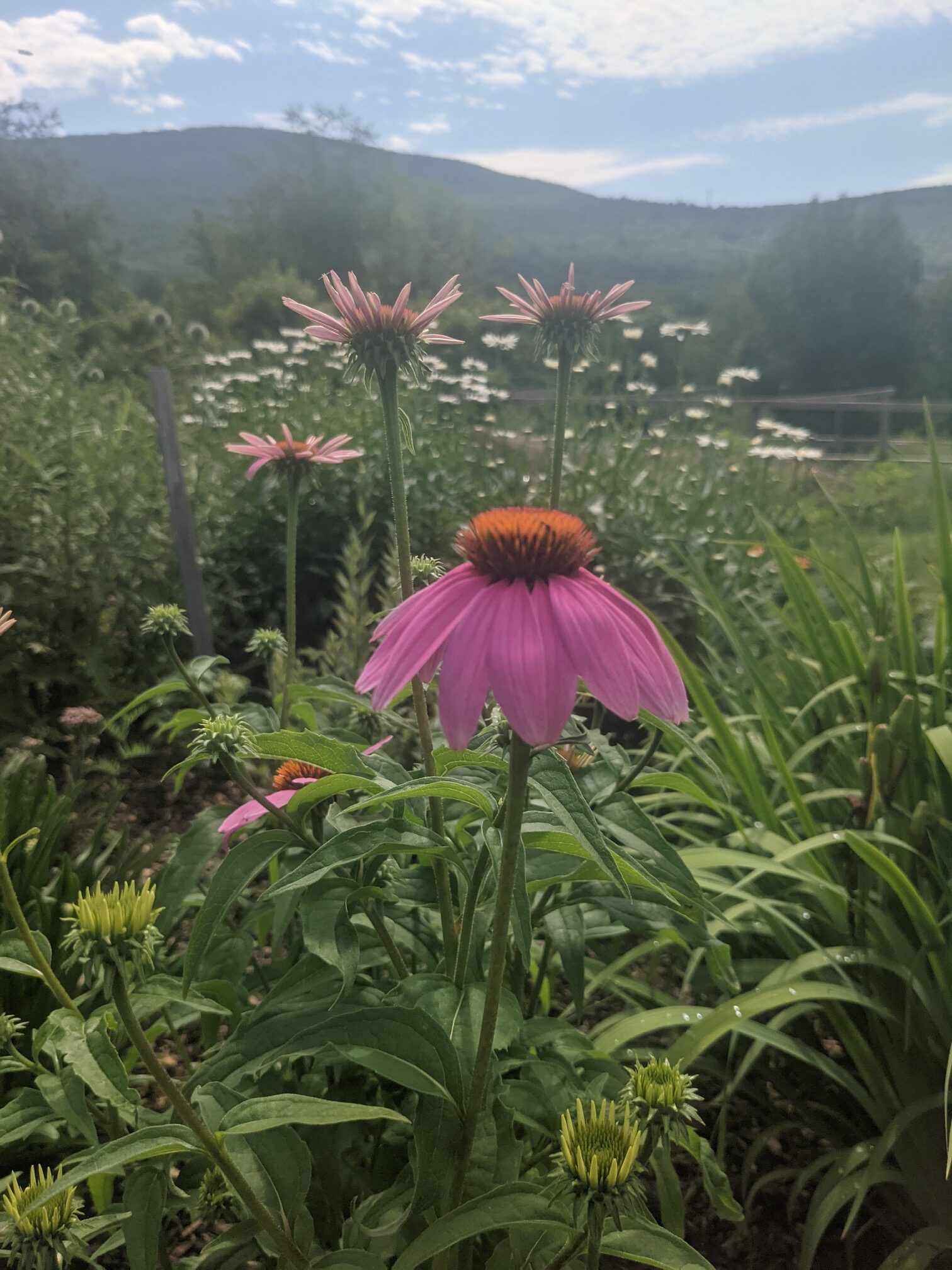The orchard began with inspired amateur gardeners, wanting to help neighbors in need, ready for enthusiastic trial and error, with curiosity about complex relationships in the natural systems around them. It is a work in progress, with first tree and shrub plantings in place, and much layering to come that will evolve over decades.
 THE ORCHARD AS A GUILD
THE ORCHARD AS A GUILD
“In nature, the term ‘guild’ denotes the smallest cluster of relationships within the living web of an ecosystem – for example, a small community of bacteria, fungi, plants, and animals that provide for one another. A guild has no single leader or central hub from and to which all exchanges pass. It is a multi-directional network. One member may benefit from two or three others and in turn provide benefits to three or four completely different members. These reciprocal relationships do not need to be simple. Network diversity increases the likelihood that all needs are met.” (Mang, Haggard et al, Regenerative Development and Design: A Framework For Evolving Sustainability,” p. 88.)
We call ourselves a guild in the hope that we will be ever-evolving and mutually supportive in our relationships, to practice permaculture socially and ecologically.
INITIAL GUIDELINES FOR PLANT PLACEMENT IN THE ORCHARD/FOOD FOREST:
Fruits, shrubs, and understory are chosen for diversity and resiliency, with as many types and varieties as possible.
Tree plantings are organized by alternating species so that if pests come to the orchard
they will have a more difficult time jumping to the same type of tree.

Nitrogen fixing trees and shrubs are dispersed throughout in abundance, to continuously regenerate the soil nutrients.
Each plant is tried in multiple areas in the orchard, to see where it best thrives for sun exposure, moisture, and co-plantings.
Animal Habitat Encouragement – The presence of birds, bats, insects, and small animal life benefits the orchard.
Surrounding plant guilds should be planned for around each tree, which involves incorporating shrubs and an understory of herbaceous plants (medicinal, edible, and pollinators) in order to maximize species diversity and cooperation for mutual support and maximal abundance. A healthy guild includes the following:
- Food for People/Creatures – Maximum diversity for health and nutrition. We should grow plants to partner with us to provide food, medicines, energy, building supplies, fibers, etc.
- Food for the Soil – Honor the different needs of different plants. We test pH/nutrients to balance soils, compost to add organic matter back to the soils, and plant legumes and nitrogen fixing plants that are able to take nitrogen from the air and convert it to a usable form in the soil.
- Diggers/Miners – We are supported by deep rooted plants, animals and insects that reach far into the earth’s soil and bring minerals up to the surface help us to break up soil, soften it, and foster air and water absorption into the earth.
- Organic Ground Covers – Protect the soil from the sun, hold moisture, and help with maintenance.
- Climbers and Supporters – Maximum food production, especially in areas where land resources are limited. Climber support can be living or non-living, with imitation of nature to use layering for fullest potential.
- Protectors – Anything that helps protect a natural guild is a protector, from fencing to deterrents. Strong-smelling plants can guard the guild against damaging insects by repelling and confusing them. Beneficial animals and insects such as frogs, birds, lizards, praying mantis, ladybugs, etc. can be invited by creating habitat and planting plants that they prefer.
Links to come with permaculture and regenerative design references.
